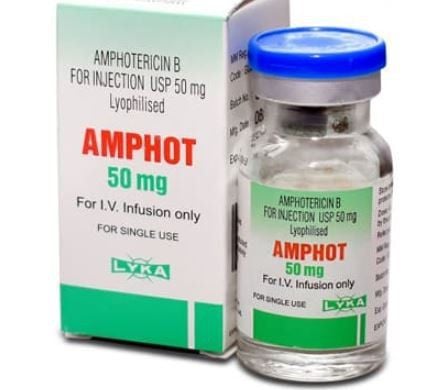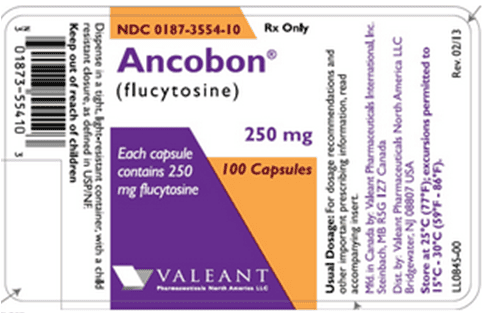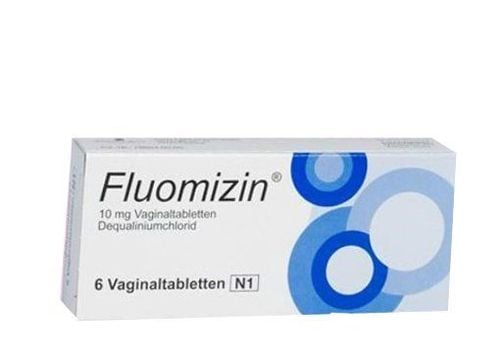This is an automatically translated article.
Flucofast is made in the form of tablets with the main ingredient Fluconazole 50mg. This is an antifungal active ingredient of the Triazole group with systemic antifungal action. Let's learn useful information about Flucofast through the article below.
1. Effects of Flucofast
The active ingredient Fluconazole in Flucofast has an antifungal effect through the mechanism of altering cell membranes. Specifically, Fluconazole increases the permeability of fungal cell membranes, while reducing the import of substances necessary for DNA synthesis and loss of essential factors such as amino acids, potassium,... In addition, Fluconazole also inhibits CYP450, thereby inhibiting the synthesis of ergosterol, which is an integral sterol in fungal cell membranes. What is special is that fluconazole only has a strong affinity for CYP450 in fungi, and has almost no effect on mammalian CYP450 when performing the study.The antifungal spectrum of Fluconazole is relatively broad, it affects strains such as:
Blastomyces dermatitidis; Candida spp.; Coccidioides immitis; Cryptococcus neoformans ; Epidermophyton spp.; Histoplasma capsulatum. Based on the above mechanism of action and antifungal spectrum, Flucofast is indicated as follows:
Treatment of Candida infections in parts such as throat, mouth, esophagus, legs, trunk, groin, vagina, .. Prophylaxis and treatment of Candida infections in patients with severe immunodeficiency diseases such as AIDS, malignancies such as cancer or bone marrow transplant patients,... Treatment of fungal meningitis caused by Cryptococcus neoformans. Treatment of fungal skin diseases caused by Epidermophyton, Microsporum, Trichophyton.
2. Dosage and how to use Flucofast
Dosage and duration of Flucofast depends on the severity and response of the patient. The recommended adult dose of Flucofast is as follows:
For indications for the treatment of Candida infections in:
Oral and oropharyngeal: 50mg/time/day. The treatment dose should be maintained for 7-14 days. If the condition is severe, the dose can be considered: 200mg/time/day on the first day, then 100mg/time/day on the following days. Maintain treatment for at least 2 weeks. Esophageal: 50mg/time/day. Extend treatment for at least 3 weeks and continue for another 2 weeks after symptom resolution. Systemic: The first day use 400mg/time/day, 200mg/time/day in the following days. Extend treatment for at least 4 weeks and continue to use for 2 more weeks from symptom resolution. Vaginal: Use 150mg as a single dose. For the indications for the prophylaxis of candida infections in immunocompromised patients, cancer patients, and bone marrow transplant patients: The recommended dose is 400 mg/time/day.
For indications for the treatment of meningitis: Start with 400mg/time/day on the first day, the following days maintain at 200-400mg/time/day. After CSF culture is negative, continue to maintain treatment for 10-12 weeks.
For fungal skin infections: The dose should be 50mg/time/day. Use for about 6 weeks.
If the patient is a child, the recommended dose of Flucofast is as follows:
In neonates 3 - 6 mg/kg/time, repeated every 72 hours for the first 2 weeks of age. Time from 2-4 weeks after birth, use dose 3-6mg/kg/time, repeat every 48 hours. In children, the prevention of systemic fungal infections is 6-12 mg/kg/day, and the prevention of superficial fungal infections is 3 mg/kg/day. The total daily dose should not exceed 600mg. Flucofast drugs need to be adjusted to reduce the dose if used in patients with impaired renal function. Specifically, if the creatinine clearance is less than 50 ml/min, the patient should only receive a dose equal to 50% of the recommended dose in the normal population.
Note, the treatment with Flucofast must be ensured continuously, avoiding the case of incorrect use of the drug and insufficient dosage, which will lead to a condition that is not completely cured but is likely to recur.
Food does not affect the absorption of Flucofast, so patients can take the drug before or after meals.
3. Undesirable effects of the drug Flucofast
Patients treated with Flucofast often experience side effects such as:
Diarrhea, vomiting, nausea; Increased indicators in liver function tests; Stevens - Johnson syndrome ; Scaly skin; Itchy rash; Low blood pressure, dizziness.
4. Precautions while using Flucofast
Flucofast should be discontinued if signs of progressive liver disease are observed in the patient. Flucofast should not be used in patients infected with strains of Candida fungi that are not susceptible to Fluconazole because it may exacerbate fungal growth in these cases. For patients with HIV/AIDS immunodeficiency syndrome, it is necessary to closely monitor treatment and discontinue the drug as soon as signs such as skin rash, scaly skin are noticed. Flucofast has the potential to prolong the QT interval and should be used with caution in patients with a history of arrhythmias.
5. Flucofast drug interactions
Co-administration of Flucofast with the following drugs may cause therapeutic effects:
Rifabutin, Rifamycin: Flucofast changes the blood levels of these two drugs, especially when used in patients HIV. Coumarin anticoagulants: Effect on prothrombin time. Phenytoin, Cyclosporin, Sulfonylurea hypoglycemic drugs, theophylline, astemizol,...: increased plasma concentrations of drugs when combined with Flucofast. Above is the basic information about the drug Flucofast. Because Flucofast is a prescription drug, patients should not use it on their own, but need to contact a specialist directly for a suitable prescription to ensure safety for health.













